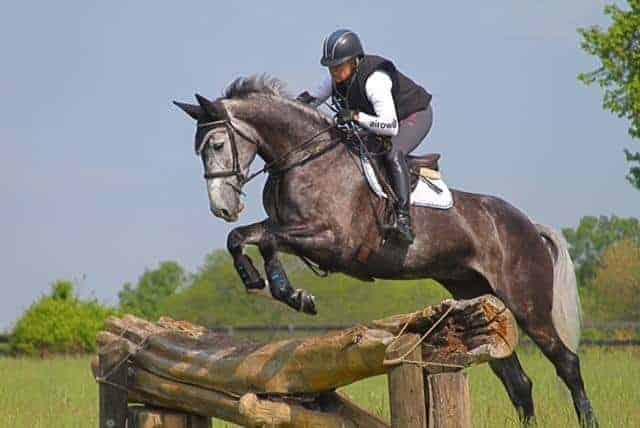How do air jackets work and why should I wear one?

If you event chances are you wear an air jacket or are considering the option. But what extra protection do they offer and how do they work?
Horse & Country spoke to Danielle Santos from Charles Owen, who makes the Airowear AyrVest, to find out.
What is the benefit of having air in a body protector?
The use of air in body protection is similar to air bags in cars. Air jackets are considered a top-up to your foundation garment, which should be a BETA Level 3 body protector if you event. They effectively extend the area of protection on the body, which would restrict your ability to ride if they were fully inflated all the time. This is why they are triggered by a fall.
How does an air jacket work?
The air activation relies on the rider separating from the horse in a fall, as the airbag attaches to the horse’s saddle via a cord. This cord pulls the trigger mechanism, which releases air into the air circulation chamber. The chamber is designed to expand outward and provide protection to certain areas of the body, without creating pressure on the chest, which makes it more comfortable for the rider.
Which parts of the body do they protect?
When inflated, the air circulation chamber extends from the sides of the neck (which stabilises the head) and down the body. It is designed with two air tubes connected by a trampoline effect to maximise protection to the chest and spine. The chamber also inflates to cover the hips, providing protection to the pelvis.
How does the protection differ from a standard body protector?
A standard body protector has microcellular air similar to a camping mat. An air jacket has a main air channel which acts like a mattress, removing your body from the ground more effectively.
Therefore, the air jacket creates extra stopping distance between the body and the ground, providing a more cushioned impact.
British Eventing funded research in 2015 into air jackets and concluded there is still a ‘high probability’ of riders incurring a severe injury during a fall. Is it really worth wearing one?
Air jackets offer added protection to the coverage provided by a BETA Level 3 body protector. This can lessen injury in certain types of fall, or it may protect a rider during the initial impact (when the rider hits the ground) during a rotational fall.
The improvement in protection in the BE report stated that the risk reduction may be greater because the body is not weakened by the initial fall, prior to the second impact of the horse landing on the rider.
Why are they so expensive?
Using air in body protection, whether it’s the comprehensive coverage of the Airowear AyrVest or a simple air jacket, involves a complex design and use of materials.







